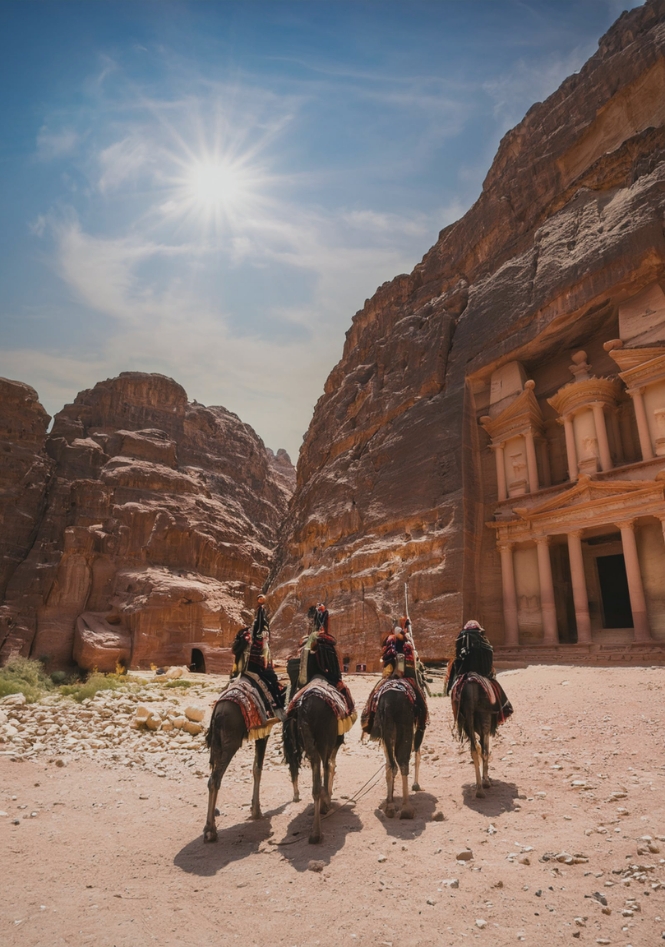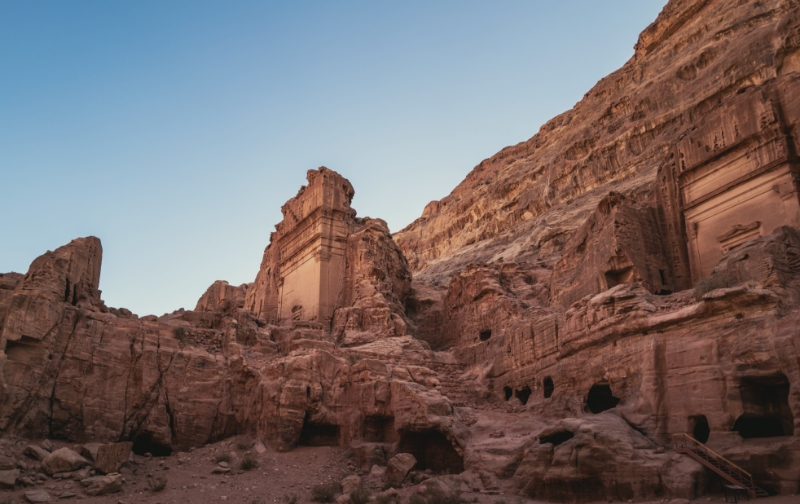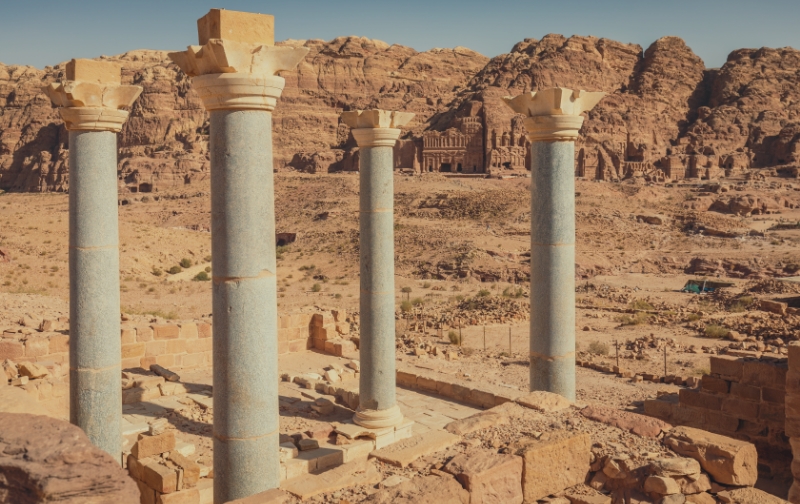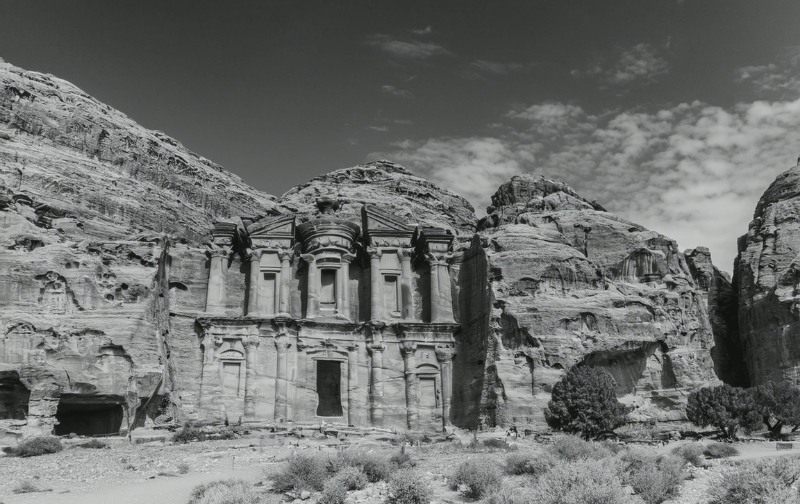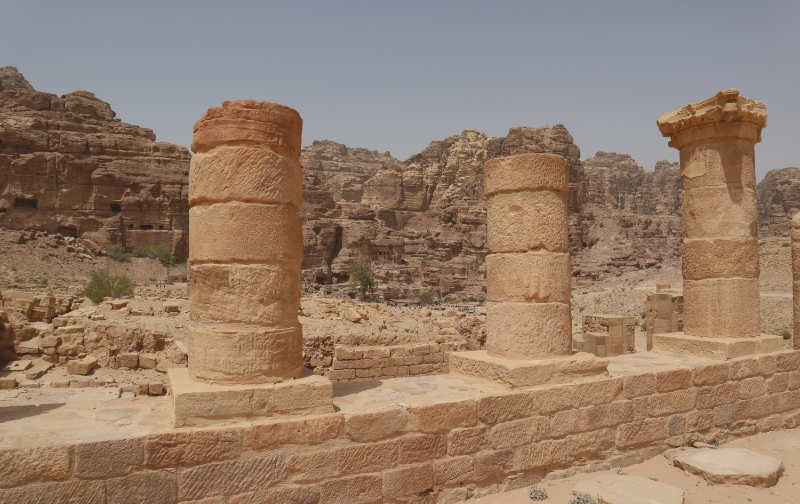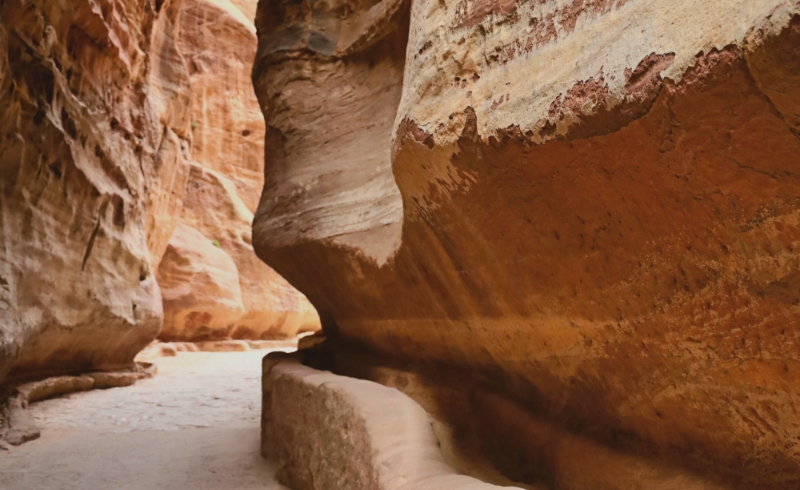History
The city of Petra, the capital of the Nabataeans, is one of the most famous archaeological sites in the world. Located 240 km south of the capital, Amman, and 120 km north of the Red Sea town of Aqaba, Petra, the world wonder, is undoubtedly Jordan's most valuable treasure and greatest tourist attraction. It is visited by tourists from all over the world.
The exact date of Petra's construction is unknown, but the city began to prosper as the capital of the Nabataean Empire from the 1st century BC, which grew rich through trade in frankincense, myrrh, and spices.
Petra was later annexed to the Roman Empire and continued to thrive until a large earthquake in 363 AD destroyed much of the city in the 4th century AD. The earthquake, combined with changes in trade routes, eventually led to the city's downfall, and it was ultimately abandoned.
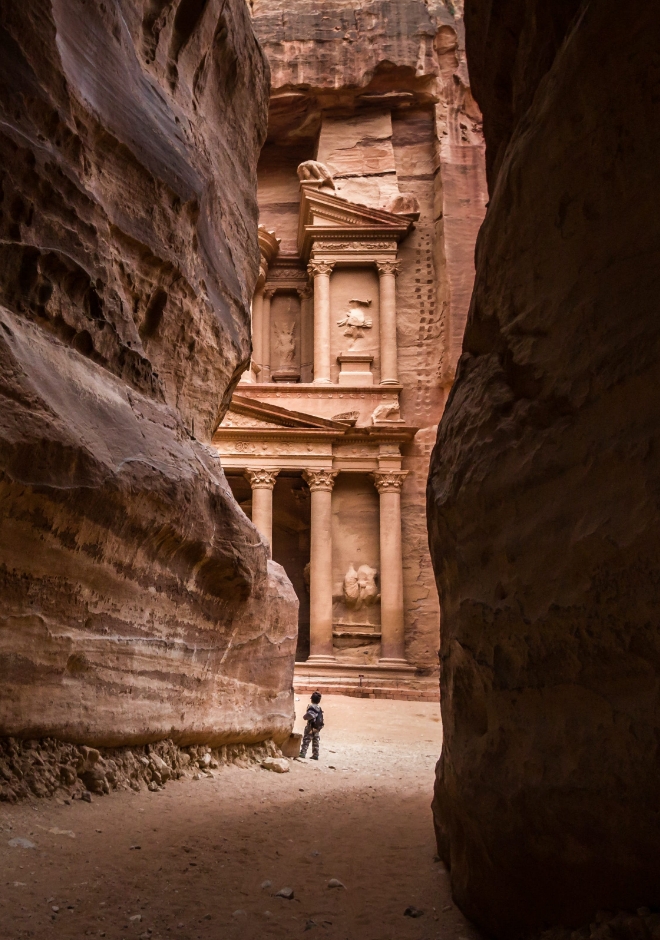
By the middle of the 7th century, Petra appears to have been largely deserted and was then lost to all except local Bedouin from the area.
Click here to learn more through Petra's historical timeline.

The Rediscovery of Petra
-

20+ FILMS FEATURED SCENES FILMED IN PETRA
-

80% IS YET TO BE DISCOVERED
-

UNIQUE DESTINATION FOR HIKERS
-

1,174,137 VISITORS IN 2023
-

OFFICIAL LANGUAGE: ARABIC, COMMON: ENGLISH
Historical Timeline
Legacy of Nabataeans Petra
The Nabataeans excelled in creating a flourishing civilization in the desert of Jordan. They mastered water technology and trade, leaving a legacy of architectural marvels and cultural richness that reflected their innovative and adaptive spirit.
The Nabataeans crafted intricate tombs that were cut out of the mountainsides, alongside temples, a theater, and, post-Roman and Byzantine influence, added colonnaded streets and churches. The Nabataean city showcases over 10,000 years of human settlement, blending natural, cultural, and archaeological wonders into a cohesive historical tapestry.
